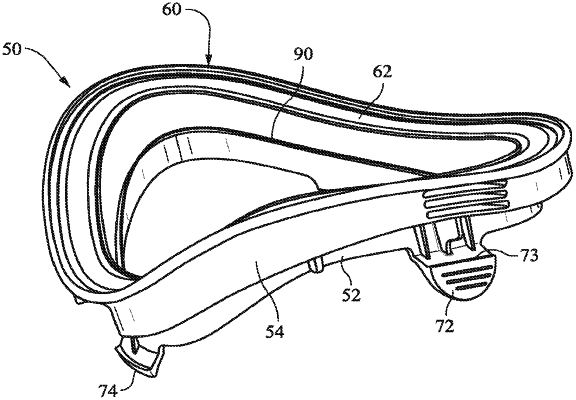| CPC A61M 16/06 (2013.01) [A61M 16/0611 (2014.02); A61M 16/0616 (2014.02); A61M 16/0655 (2014.02); Y10T 29/49826 (2015.01)] | 23 Claims |

|
1. A cushion assembly for a mask system for providing positive pressure respiratory therapy with a flow of air to a patient to treat a respiratory disorder, the cushion assembly comprising:
a cushion constructed from foam and adapted to contact the patient's face in use;
a frame at least partly forming a nose-receiving chamber, the frame having an anterior side that is configured to be positioned distal from the patient in use and a posterior side that is configured to be positioned proximal to the patient in use, the frame having a rim on the anterior side of the frame that forms a hole, and the frame being more rigid than the cushion; and
a cushion-to-frame component constructed from silicone, the cushion-to-frame component having a base joined to the frame at the posterior side, the cushion-to-frame component having a platform that is cantilevered from the base in a radial direction continuously around a periphery of the cushion-to-frame component, the platform having a first surface configured to face the patient in use and a second surface configured to face away from the patient in use, and the cushion being joined to the platform on the first surface and not on the second surface such that the cushion extends from the platform in a direction opposite the frame.
|